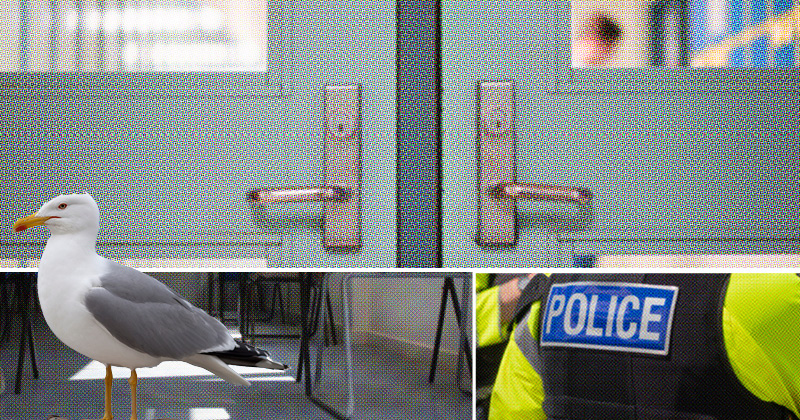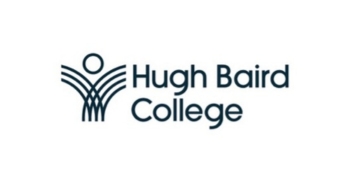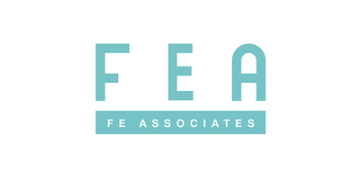Armed intruders, shootings near by and seagulls have forced schools teaching almost 100,000 pupils into lockdown, Schools Week can reveal.
Leaders have warned communications during the incidents can be a “difficult balance”. It comes after one incident saw parents storm an academy’s grounds and threaten staff despite emergency measures being in place for just nine minutes.
The NASUWT teaching union is calling on the government to introduce “comprehensive, mandatory lockdown guidance in schools”, amid concerns some schools are ignoring advice and ill-prepared for “a potentially violent intruder”.
How often do schools go into lockdown?
Lockdown record-keeping is patchy as the government doesn’t collect figures on incidents in schools.
Meanwhile, just 18 local authorities provided figures when asked under the freedom of information act, while more than 100 could not. Most police forces could not provide data either.
We also approached 20 of England’s largest multi-academy trusts. Five held records, three said they did not and 12 did not respond.
At least 117 incidents since last January
In the absence of official data, Schools Week analysed news reports on Google.
We found 117 separate incidents of reported lockdowns since January 1 last year. Almost 100,000 pupils attend the affected schools.
Thirty-eight per cent (45) followed incidents – including attacks, weapon sightings and protests – near schools.
A further 21 per cent (24) followed malicious communications, delivered by email or phone, with a further 18 per cent (21) coming after concerns were raised about intruders.
Wayne Bates, an NASUWT national official, says there seems to be “more media reports”.
But this “could be due to increased reporting, or perhaps reflects an improving situation”, with more schools having emergency procedures in place.
Dan Grant, of Leaders in Safeguarding Ltd, called on the government to launch a “formalised process for gathering data to help the sector identify areas of growing concern, what works well and assist with planning and publishing further guidance”.
Staff left with PTSD
The Bloxwich Academy in Walsall went into lockdown for just nine minutes after an alarm was raised over a potential intruder. They turned out to be a truanting pupil.
But despite the school regarding the exercise as a success, more than 100 parents gathered outside within 30 minutes. Some urged pupils to jump its spiked security fences, placing blankets, bags and coats over the top to aid their climb.
David Lowbridge-Ellis, of the Matrix Academy Trust, which runs the school, said “at least one young person was quite seriously injured and had to go to hospital”.
Others “bashed their way through” the school’s main gate, before “banging on the windows, swearing at us, calling us every name under the sun beginning with the letter c”. Gary Smart, also of Matrix, received death threats.
“It felt like you were going to be attacked. There were people punching the glass next to me and spitting on the glass.”
Leaders decided “the safest thing to do” was to release pupils.
Lowbridge-Ellis said he was one of “quite a few” staff “treated for PTSD”. Traumatised children also required “professional support”.
Parent and media challenges
“We communicated with parents via text message. We were at pains to make sure our message was reassuring. We can’t really fault our process,” he said.
It is thought pupils’ “lockdown selfies”, shared on platforms such as Snapchat, sparked the parental panic.
Nova Education Trust – which locked down one school in March over the “potential threat of an unknown individual” on a site – described “social media and media coverage” as “growing challenges”.
“Inaccurate or premature information can spread quickly, creating confusion and anxiety among parents, pupils, and the wider community.
“In what is already a pressurised context, these additional complications can make things significantly more difficult for schools.”
Notre Dame Catholic Academy in Liverpool closed off part of its site in May after three seagulls entered the building, “diving” on pupils and “causing a nuisance”.
Victoria Taylor, the school’s head, said the safest way to remove the birds was to put the school into a partial lockdown.
Notre Dame also went into lockdown following a “police incident 200 metres from the school, where shots had been fired”.
The secondary is a “mobile phone-free school”, she said, “so our pupils were not aware of what was happening outside”.
Comms a ‘difficult balance’
Edward Vitalis, the chief executive of the Invictus Education Trust, said communications can be a “difficult balance” during a lockdown.

Releasing “too much detail… may risk compromising the safety of pupils and staff, while holding back can cause understandable worry”.
And if “messages come from a [MAT] HQ or central team, they may lack the full picture”, making it “difficult to give parents accurate, timely information”.
Concerns over school lockdowns are now being seized-upon by the far right.
Campaigner Stephen Yaxley-Lennon (also known as Tommy Robinson) posted on X that he had been “inundated” with parents saying they had received correspondence from their children’s schools’ regarding lockdown.
The post featured screenshots of an email in which parents were told teachers had talked to their children “about something called ‘lockdown’”.
It told them they needed to run drills “on an annual basis”, with practice scenarios including “a threat from above” and inside the building “with tables turned to barricade toward the corridor”.
Yaxley-Lennon asked: “Wtf have schools been told to prepare for?!”
Schools more prepared?
Pepe Di’Iasio, the general secretary of the Association of School and College Leaders, said it was “sensible” to have such plans in place as “sadly, we live in times where threats exist to many public venues and institutions”.
“It is important to remember that this is a precautionary approach, and that schools and colleges are overwhelmingly safe places.”
Earlier this year, 3 per cent of teachers told Teacher Tapp they had gone into lockdown following a “security concern”. A further 1 per cent had enacted the policy for “another reason”.
A separate poll last September showed 47 per cent of primaries have lockdown drills they practise with pupils, up from 33 per cent in 2022. For secondaries, the figure rose from 38 to 59 per cent.
But the study also suggested 26 per cent of primaries and 19 per cent of secondaries do not have procedures in place.
Call for better guidance
Bates said the NASUWT has heard “anecdotal evidence of some institutions ignoring the advice, believing they do not need a lockdown procedure”, leaving “teachers, pupils and other staff potentially vulnerable to a violent intruder”.
He also noted that current guidance “appears to discourage drills in primary and early years settings”. Government guidance – which is non-statutory – says it is “relatively uncommon” for such exercises “to involve primary school and early years learners”.
Instead, staff in these settings “may hold drills for staff at a time when younger learners are not present”.
Bates said there are extensive regulations for fire safety in schools, which include the requirement to carry out practice evacuations or drills.
“The NASUWT believes there is a need for comprehensive, mandatory lockdown guidance in schools.”
Taylor said her school offers mental health support and engages “staff in post-drill conversations to help ease anxiety and answer questions”.
Prepare, prepare, prepare
Ciran Stapleton, the head of St Joseph’s Catholic High School in Slough, urged schools to “prepare, prepare, prepare”. In March 2023, a man carrying a knife entered his school – just a few weeks after pupils and staff carried out their annual drill.
The intruder – who was later given a hospital order under the Mental Health Act – claimed he had a gun, saying: “I’m going to take everybody out.”
Stapleton confronted him and talked to him as he waited for police to arrive and the school was locked down. Wires could be seen coiling out of the intruder’s bag.
“He was really edgy, erratic eyes, erratic behaviour, rocking back and forth. He was talking about the end of the world.
“I was trying to hold him up until police got there. When he realised it wasn’t going anywhere, he started saying ‘I should have gone to Westminster’.”
Police arrived 25 minutes later. They found a knife in his waistband, but no gun or explosives.
A ‘levelled’ approach
Following the incident at Bloxwich, Matrix tore up its lockdown procedures, replacing them with a five-level approach, dubbed SMART Response, ranging from 0 (monitoring) to 4 (lockdown).
Had the school adopted the strategy before the incident, the trust believes, staff would “could have investigated the situation calmly”, with the “emotional and reputational impact…significantly reduced”.
Lowbridge-Ellis argued the model offers an alternative to “on-off” lockdown guidance it previously followed “to the letter”.
The current non-statutory lockdown guidance means schools do not have to comply.
“Some of the guidance is also vague, lacking sufficient detail to enable schools to put appropriate procedures in place,” Bates added.
He pointed to the guidance’s failure “to highlight the importance of having a secure control room to coordinate a response to a violent intruder”.
For some schools, all communications and CCTV “are controlled from reception, which could be the first location to be compromised in an incident”.
But Lisa Broad, a former DfE counter-terrorism lead who now consults schools, warned the “diversity of school environments” makes it “challenging for government to issue prescriptive guidance”.
Martyn’s Law changes
However, some of this will change with Martyn’s Law.
Also known as the Terrorism (Protection of Premises) Act 2025, the legislation will order schools to have “appropriate” evacuation, invacuation and lockdown procedures in place.
The bill received royal assent in April. The government will publish statutory guidance on it during the 24-month implementation period “to assist those responsible to understand the requirements set out in the legislation”.
Broad believes the “critical” impact of Martyn’s Law is the mandatory requirement for schools to have effective emergency response plans.
“Although new legislation is specifically about terrorism, it actually makes schools safer from a range of threats – not just those politically, religiously or ideologically motivated.
“Having these plans in place will raise the bar and make our schools safer.”
Physical security measures will not be mandated. It is not yet known if the legislation will force schools to conduct lockdown drills, though.
Bates also stressed that “failure to have sufficient and effective policies and procedures in place could result in a penalty” from the regulator, the Security Industry Authority.
Martyn’s Law: What it means for schools
Schools with a capacity of more than 200 will have to follow “Martyn’s Law” from 2027, with and the Department for Education this week publishing a policy paper on the legislation.
What is Martyn’s Law?
The Terrorism (Protection of Premises) Act 2025 became law in April, but there is an implementation period of “at least” 24 months.
The law requires venues above a certain size to implement certain policies to follow in the event of a terrorist attack.
It is known as Martyn’s law, named after Martyn Hett, one of 22 people killed in the 2017 Manchester Arena terrorist attack. It follows a long campaign by his mother, Figen Murray, for better measures to protect the public.
Which schools are affected?
Schools with a capacity of below 200 do not need to follow Martyn’s Law, although the government said it encouraged “all settings to have preparedness plans for the safety of their learners and staff”.
All other schools with a capacity of over 200 will be considered as in the “standard tier”, regardless of their total capacity.
This is different to, for example, commercial venues, which will be in the “enhanced tier”, with greater requirements, if they have a capacity over 800.
What will schools need to do?
Schools covered by the law will need to have “appropriate procedures” in place.
These will need to include procedures for evacuation, invacuation (moving people to a safe place), lockdown and communication.
There is “no requirement to put physical security measures in place”.
Schools will also need to appoint a “responsible person” and notify the Security Industry Authority (SIA), the regulator.
But this must be a “body or institution”, for example the “local authority or the relevant proprietor or governing body”, as opposed to a “designated individual such as a safeguarding lead or headteacher within the institution”.
What support is available?
The DfE has said it is working with the National Counter Terrorism Security Office and the Home Office to help the sector to implement Martyn’s Law.
The government will provide “lunch and learn webinars”, guidance and factsheets, products and resources for good security practice and updates for the sector.
The government will also publish statutory guidance during the 24-month implementation to help schools “understand the requirements set out in the legislation”.
















Your thoughts